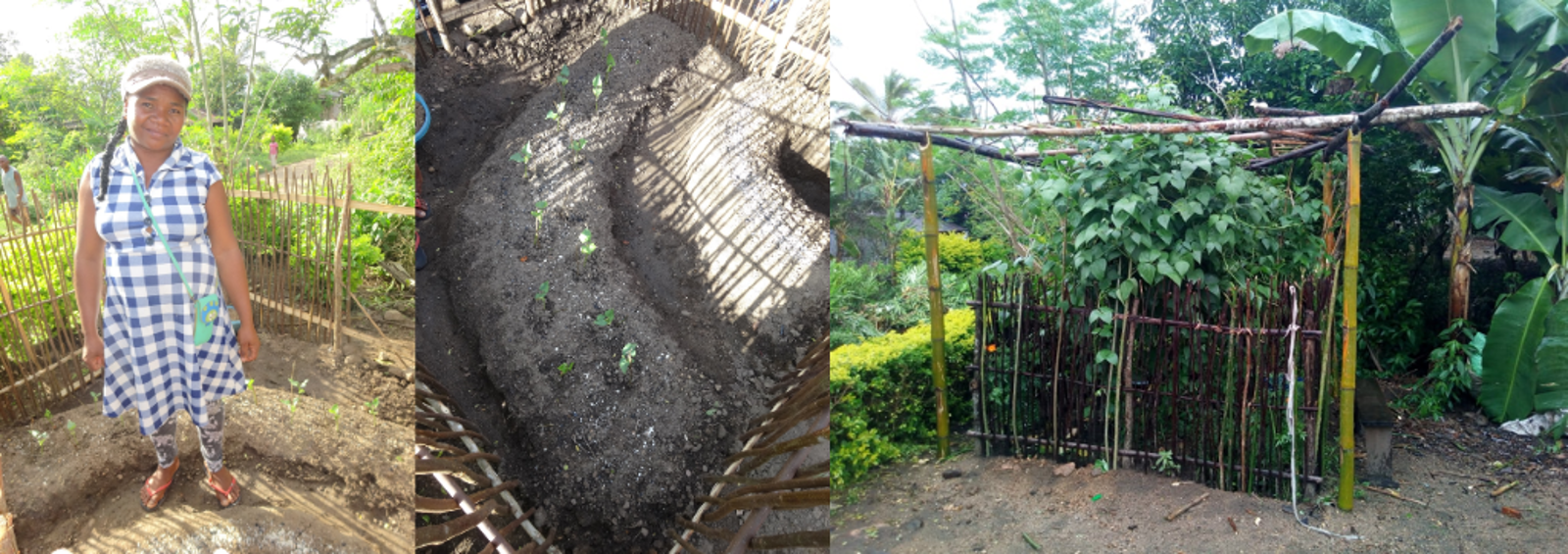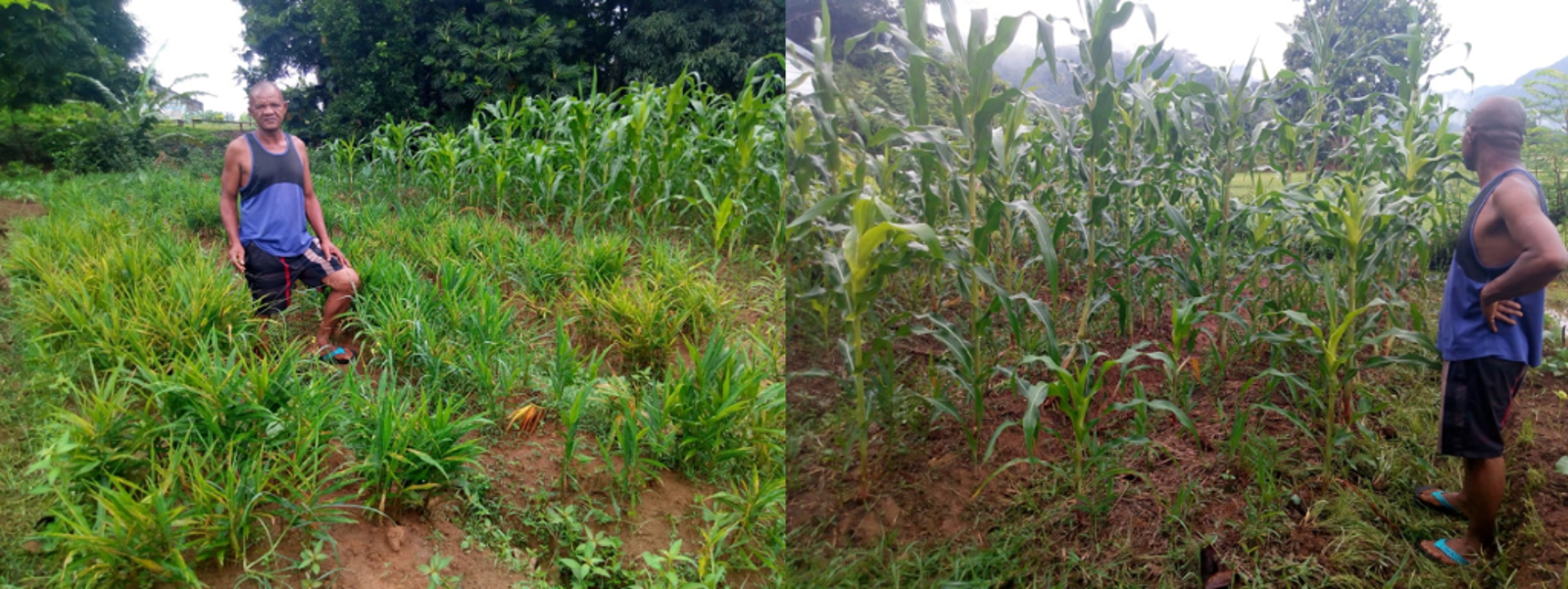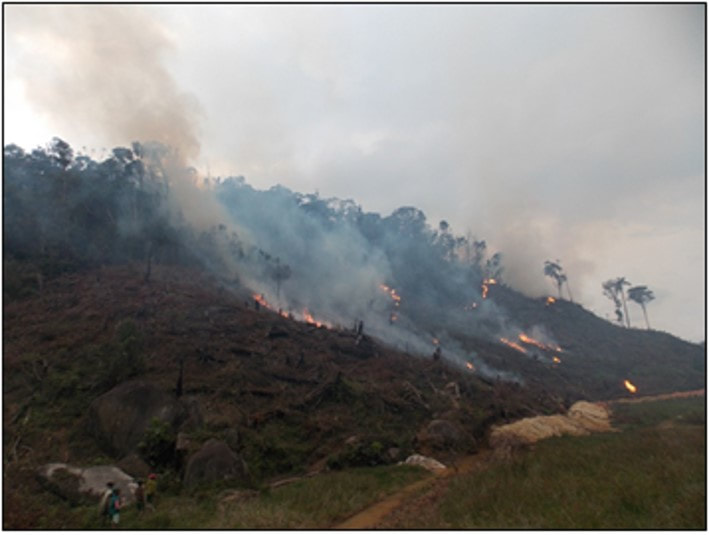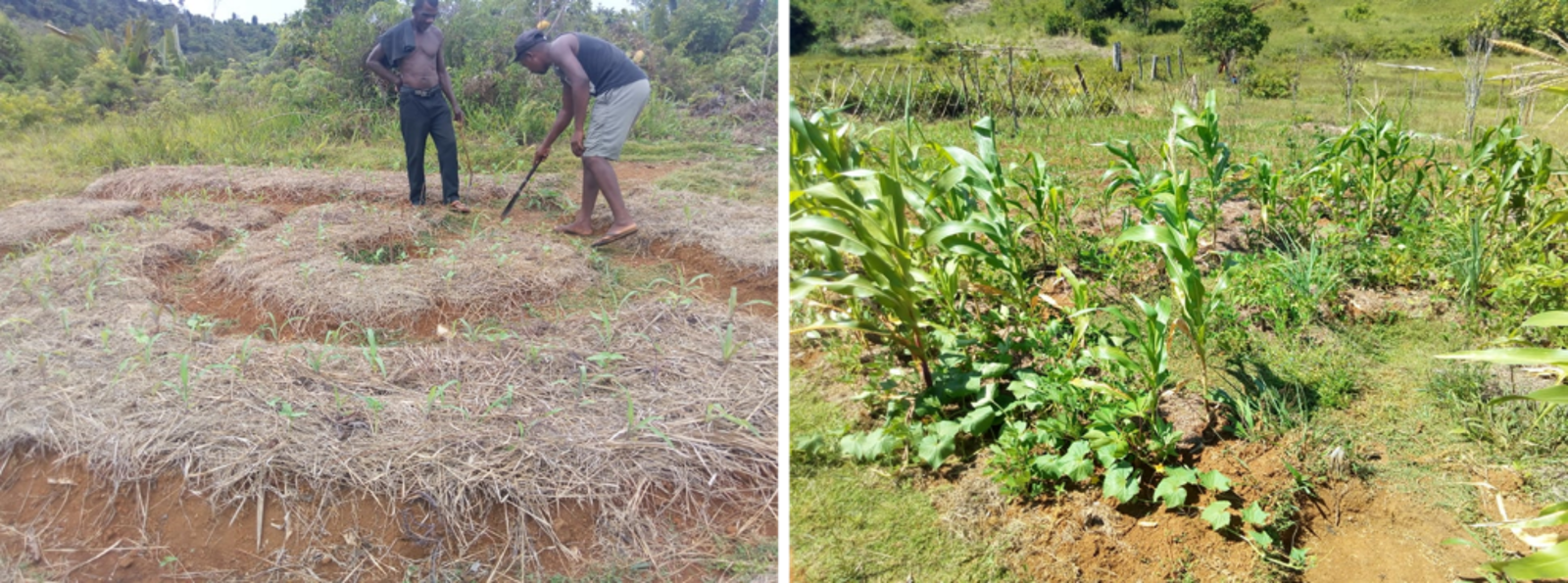By James Hererra, Ph.D., DLC-SAVA Conservation program coordinator
Farming practices around the world are changing to meet the needs of growing populations and adapting to climate change. The organic farming revolution has sparked a diverse subset of agricultural disciplines such as agroecology, regenerative and conservation agriculture, and permaculture. These practices seek to mimic and enhance natural processes to improve soil health, water management, and sustainable intensification. From a planetary health perspective, farming techniques that minimize environmental degradation will also greatly improve ecosystem and human health.
In Madagascar, as in most of Africa, shifting agriculture is the leading cause of forest loss. Not only is shifting agriculture, also known as slash-and-burn, destructive for forest ecosystems, it also degrades the ecosystem services that nature provides for people, such as carbon sequestration, nutrient cycling, preserving soils, and water filtration / retention.
Above: Slash-and-burn agriculture is the most common way to prepare land before planting rice, manioc, or corn.
To help promote a shift from unsustainable slash-and-burn to more sustainable agroecology, the DLC-SAVA Conservation staff began an agroecology training program. In collaboration with Peter Jensen of Terra Firma International, we taught skills in amending soils, composting, water management, and more. We described the first two workshops in this year’s newsletter. In November of 2019, 50 participants in two villages were trained in agroecology. Since then, DLC-SAVA agroecology technician Rabemanantsoa Thorien has continued to do monthly evaluations and consultations with the participants to track their progress and trouble shoot issues. Thus far, almost half of participants have already adopted the techniques we taught in their own home gardens and farms, and some have even begun teaching their neighbors! Here, we want to highlight some of the great successes we’re seeing.
One participant, Jeannot from Ampahana, started his garden in December by creating “pocket ponds,” also called “keyholes,” to catch rainwater run-off and channel it through amended raised beds, full of compost, and covering the soil with mulch. He planted corn, beans, peanuts, zucchini, several other vegetables, and even rice in a polyculture, with biointensive seed spacing. By early February, Jeannot was already harvesting a crop and marveling at the rapid growth. We are extremely impressed, not only with his garden, but with his tree nursery where he’s preparing coffee and cacao to plant around systematically around his farm.
Left: Jeannot and friend Pierrot in December showing their newly planted and freshly mulched vegetable beds. Right: the garden less than three months later, with a lush polyculture of corn, peanuts, vegetables, lemon grass, and even rice!
Another star participant is Dociline from Andasibe-Kobahina in the Andapa district. Dociline really embraced our principles of small, doable actions, making her garden close to home where she could experiment and manage daily with her new skillset. She created a garden of no more than 4′ x 4′, in which she amended the soils, created a water catchment keyhole, and planted lima beans and peanuts. Although it didn’t look like much at first, by February her bean plants are taller than she is! Dociline is also a model for her neighbors and has already taught two of her neighbors to create gardens using the Terra Firma technique. Not only are these perennial plants producing nutritious beans, but they also encourage good microbes that fix nitrogen in the soil to improve fertility.
 Left: Dosiline days after creating her garden, a simple corner of her yard that was previously unused. Middle: She showed us how she had created her raised bed by amending the soil with rich compost she created, and is managing run-off water from her roof using the “keyhole” in the top right corner. Right: only 3 months later, her bean plants are prolific, growing up along a terrace of bamboo, and already flowering. These beans are nutritious, enrich the soil, and are perennial, producing food year after year.
Left: Dosiline days after creating her garden, a simple corner of her yard that was previously unused. Middle: She showed us how she had created her raised bed by amending the soil with rich compost she created, and is managing run-off water from her roof using the “keyhole” in the top right corner. Right: only 3 months later, her bean plants are prolific, growing up along a terrace of bamboo, and already flowering. These beans are nutritious, enrich the soil, and are perennial, producing food year after year.
There are more than 20 additional farmers who have adopted the Terra Firma system. Some are comparing the results to garden plots using “traditional” techniques, and are already remarking the difference in yields of corn and beans. As time goes on, and crops are rotated, it will be exciting to track their progress and share their successes! Thank you to Thorien who conducts follow up evaluations and consultations with our participants every month!
 Jean Marohavana from Manantenina shows off his flourishing ginger and corn plantation, which is also surrounded by diverse vegetable crops. These soils were bare and rock-hard when we conducted the workshop in November. Jean has since amended the soils, optimized rainwater run-off, and is reaping the rewards of his labor. Ginger is an important cash crop in the region.
Jean Marohavana from Manantenina shows off his flourishing ginger and corn plantation, which is also surrounded by diverse vegetable crops. These soils were bare and rock-hard when we conducted the workshop in November. Jean has since amended the soils, optimized rainwater run-off, and is reaping the rewards of his labor. Ginger is an important cash crop in the region.




